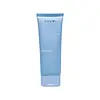What's inside
What's inside
 Key Ingredients
Key Ingredients

 Benefits
Benefits

 Concerns
Concerns

 Ingredients Side-by-side
Ingredients Side-by-side

Water
Skin ConditioningGlycerin
HumectantButylene Glycol
HumectantPEG-8
HumectantPEG-6 Caprylic/Capric Glycerides
EmulsifyingXylitol
HumectantAcrylamide/Sodium Acryloyldimethyltaurate Copolymer
Emulsion StabilisingPhenoxyethanol
PreservativeSaccharide Isomerate
HumectantIsohexadecane
EmollientBifida Ferment Lysate
Skin ConditioningAllantoin
Skin ConditioningChlorphenesin
AntimicrobialPolysorbate 80
EmulsifyingSorbitan Oleate
EmulsifyingSodium Hyaluronate
HumectantCitric Acid
BufferingSodium Citrate
BufferingWater, Glycerin, Butylene Glycol, PEG-8, PEG-6 Caprylic/Capric Glycerides, Xylitol, Acrylamide/Sodium Acryloyldimethyltaurate Copolymer, Phenoxyethanol, Saccharide Isomerate, Isohexadecane, Bifida Ferment Lysate, Allantoin, Chlorphenesin, Polysorbate 80, Sorbitan Oleate, Sodium Hyaluronate, Citric Acid, Sodium Citrate
Water
Skin ConditioningGlycerin
HumectantCoco-Betaine
CleansingBetaine
HumectantXanthan Gum
EmulsifyingSodium Chloride
MaskingCoco-Glucoside
CleansingCaprylyl Glycol
EmollientGlyceryl Caprylate
EmollientDecyl Glucoside
CleansingButylene Glycol
HumectantSodium Cocoyl Isethionate
CleansingDisodium EDTA
Panthenol
Skin Conditioning1,2-Hexanediol
Skin ConditioningAnthemis Nobilis Flower Extract
MaskingCitric Acid
BufferingQuillaja Saponaria Bark Extract
CleansingAllantoin
Skin ConditioningCaffeine
Skin ConditioningHelianthus Annuus Seed Oil
EmollientCamellia Sinensis Leaf Extract
AntimicrobialSaccharomyces/Xylinum/Black Tea Ferment
Skin ConditioningAgrimonia Eupatoria Extract
AstringentPortulaca Oleracea Extract
Skin ConditioningMelaleuca Alternifolia Leaf Extract
PerfumingPhenoxyethanol
PreservativeHydroxyethylcellulose
Emulsion StabilisingPotassium Sorbate
PreservativeWater, Glycerin, Coco-Betaine, Betaine, Xanthan Gum, Sodium Chloride, Coco-Glucoside, Caprylyl Glycol, Glyceryl Caprylate, Decyl Glucoside, Butylene Glycol, Sodium Cocoyl Isethionate, Disodium EDTA, Panthenol, 1,2-Hexanediol, Anthemis Nobilis Flower Extract, Citric Acid, Quillaja Saponaria Bark Extract, Allantoin, Caffeine, Helianthus Annuus Seed Oil, Camellia Sinensis Leaf Extract, Saccharomyces/Xylinum/Black Tea Ferment, Agrimonia Eupatoria Extract, Portulaca Oleracea Extract, Melaleuca Alternifolia Leaf Extract, Phenoxyethanol, Hydroxyethylcellulose, Potassium Sorbate
 Reviews
Reviews

Ingredients Explained
These ingredients are found in both products.
Ingredients higher up in an ingredient list are typically present in a larger amount.
Allantoin is a soothing ingredient known for its protective and moisturizingg properties. Because of this, it is often added to products with strong active ingredients.
Studies show higher concentrations of this ingredient can promote wound healing.
Though it can be derived from the comfrey plant, allantoin is produced synthetically for cosmetic products to ensure purity.
Learn more about AllantoinButylene Glycol (or BG) is used within cosmetic products for a few different reasons:
Overall, Butylene Glycol is a safe and well-rounded ingredient that works well with other ingredients.
Though this ingredient works well with most skin types, some people with sensitive skin may experience a reaction such as allergic rashes, closed comedones, or itchiness.
Learn more about Butylene GlycolCitric Acid is an alpha hydroxy acid (AHA) naturally found in citrus fruits like oranges, lemons, and limes.
Like other AHAs, citric acid can exfoliate skin by breaking down the bonds that hold dead skin cells together. This helps reveal smoother and brighter skin underneath.
However, this exfoliating effect only happens at high concentrations (20%) which can be hard to find in cosmetic products.
Due to this, citric acid is usually included in small amounts as a pH adjuster. This helps keep products slightly more acidic and compatible with skin's natural pH.
In skincare formulas, citric acid can:
While it can provide some skin benefits, research shows lactic acid and glycolic acid are generally more effective and less irritating exfoliants.
Most citric acid used in skincare today is made by fermenting sugars (usually from molasses). This synthetic version is identical to the natural citrus form but easier to stabilize and use in formulations.
Read more about some other popular AHA's here:
Learn more about Citric AcidGlycerin is already naturally found in your skin. It helps moisturize and protect your skin.
A study from 2016 found glycerin to be more effective as a humectant than AHAs and hyaluronic acid.
As a humectant, it helps the skin stay hydrated by pulling moisture to your skin. The low molecular weight of glycerin allows it to pull moisture into the deeper layers of your skin.
Hydrated skin improves your skin barrier; Your skin barrier helps protect against irritants and bacteria.
Glycerin has also been found to have antimicrobial and antiviral properties. Due to these properties, glycerin is often used in wound and burn treatments.
In cosmetics, glycerin is usually derived from plants such as soybean or palm. However, it can also be sourced from animals, such as tallow or animal fat.
This ingredient is organic, colorless, odorless, and non-toxic.
Glycerin is the name for this ingredient in American English. British English uses Glycerol/Glycerine.
Learn more about GlycerinPhenoxyethanol is a preservative that has germicide, antimicrobial, and aromatic properties. Studies show that phenoxyethanol can prevent microbial growth. By itself, it has a scent that is similar to that of a rose.
It's often used in formulations along with Caprylyl Glycol to preserve the shelf life of products.
Water. It's the most common cosmetic ingredient of all. You'll usually see it at the top of ingredient lists, meaning that it makes up the largest part of the product.
So why is it so popular? Water most often acts as a solvent - this means that it helps dissolve other ingredients into the formulation.
You'll also recognize water as that liquid we all need to stay alive. If you see this, drink a glass of water. Stay hydrated!
Learn more about Water